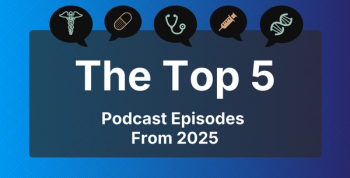
VBID Concepts in the Context of Connecticut's Health Enhancement Plan
In order to combat a projected budget gap of $3.8 billion, Connecticut state employees were provided the opportunity to enroll in a program using value-based insurance benefit design concepts.
A. Mark Fendrick, MD, director of the University of Michigan Center for Value-Based Insurance Design (VBID) and editor-in-chief of The American Journal of Managed Care, will travel to Washington, DC, on April 7 to discuss VBID in the context of Connecticut’s Health Enhancement Plan (HEP). Dr Fendrick co-authored an
In order to combat a projected budget gap of $3.8 billion, Connecticut state employees were provided the opportunity to enroll in a VBID based program in 2011. With these insurance modifications, the program removed deductibles and copays for age-appropriate screenings and medication copays for individuals with chronic conditions, and the program assessed $35 copays for emergency room (ER) usage when alternatives were available. Its intention was to eliminate financial barriers in order to increase evidence-based preventive services such as health screenings and vaccinations, reduce ER usage, and low-value care, and actively engage its enrollees, ultimately lowering healthcare system costs over the long term.
What sets this program apart from other cost-sharing systems, is that it aligns patients’ out-of-pocket spending with clinical value by reducing cost sharing for high-value services, or increasing cost sharing for low-value services. Another unique feature is the need for members to satisfy a series of requirements, like health risk assessments or physical examinations, in order to remain within the program and thus rendering them accountable for their own care. If they do not keep up with the requirements they will be disenrolled; however, they are permitted the opportunity to qualify again.
To the researchers’ surprise, 98% of employees agreed to enroll in the program. The team then looked at changes during the first 2 years of the program, and compared the Connecticut group of approximately 64,000 to 215,000 enrollees with other employee-sponsored plans across 6 different states.
They discovered that preventive office visits increased by 13.5 percentage points. Visits to the ER without hospital admittance decreased by 10 visits per 1000 enrollees and then by 25 visits per 1000 enrollees, in relation to the comparison group. Overall, HEP boosted preventive service usage significantly across most major outcomes.
“Many other programs that are purely voluntary in nature have seen relatively small increases I the use of targeted high-value services,” Richard Hirth, professor and associate chair in the Department of Health Management and Policy,
Nonetheless, he did note that observers should expect a delay in cost savings due to the nature of VBID and the high participation rate they encountered.
Newsletter
Stay ahead of policy, cost, and value—subscribe to AJMC for expert insights at the intersection of clinical care and health economics.








































